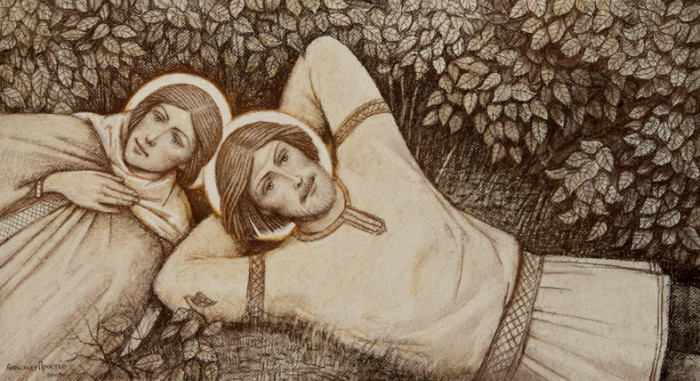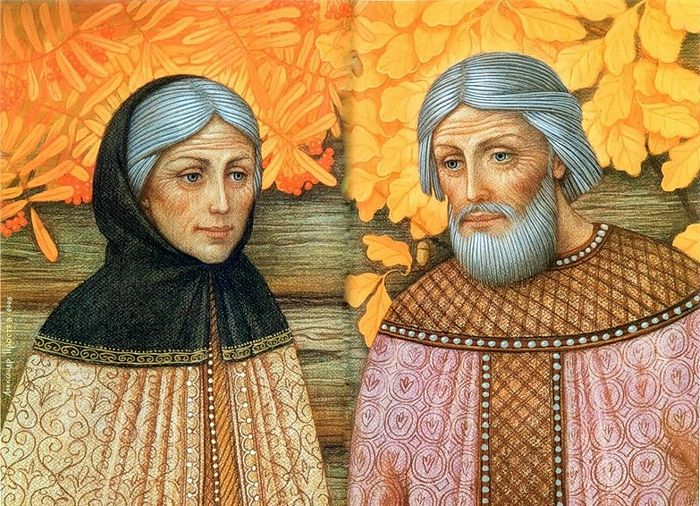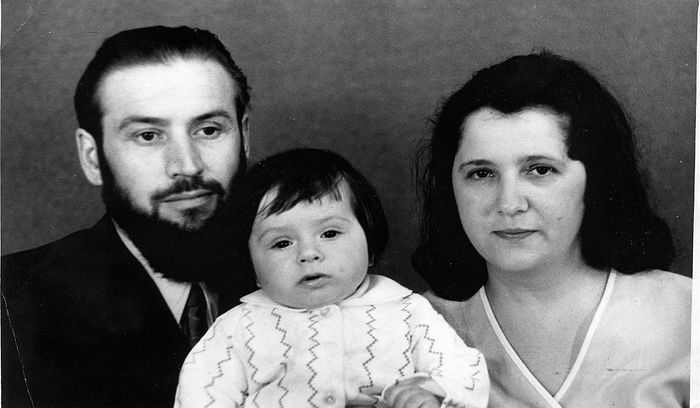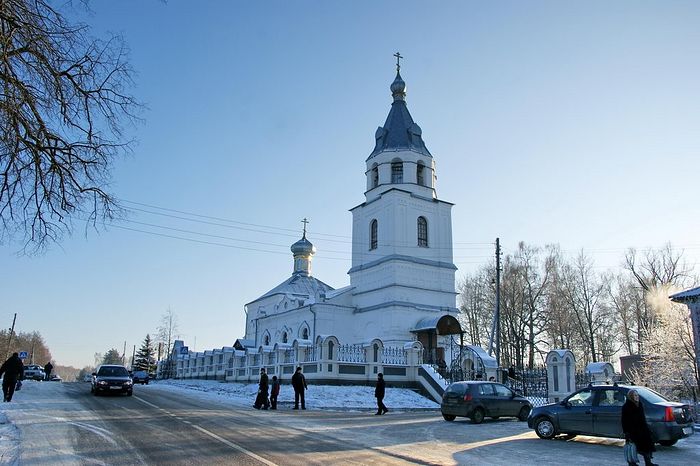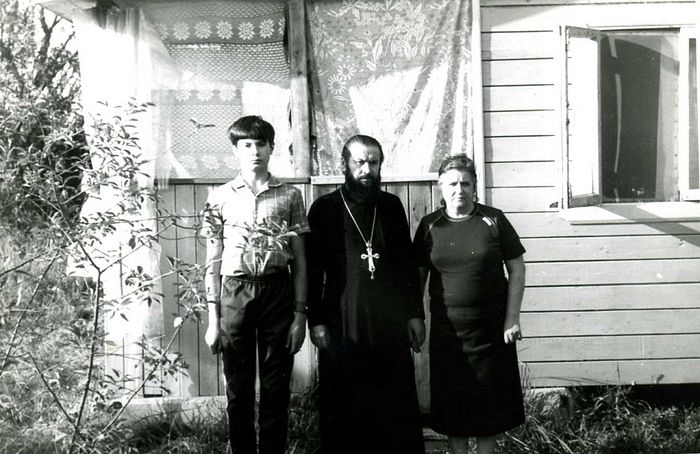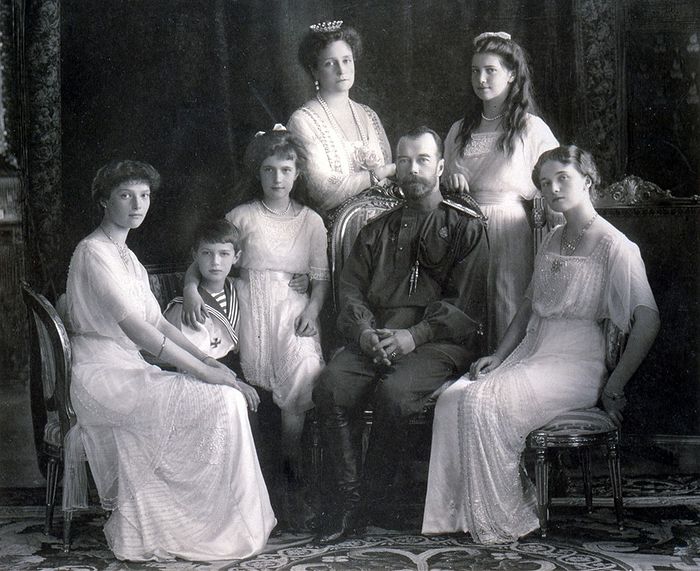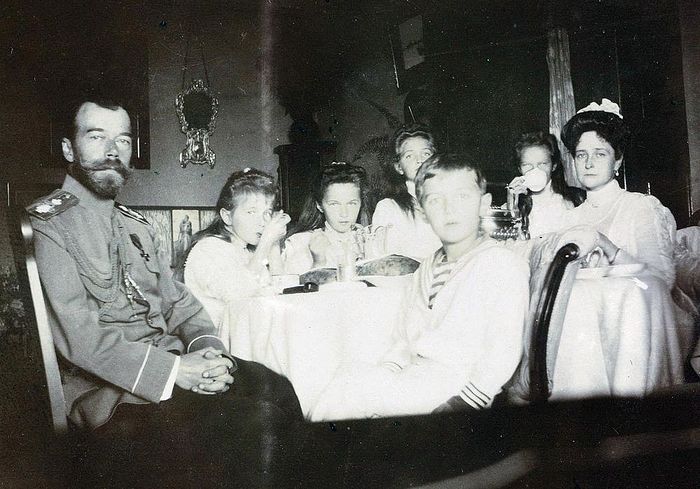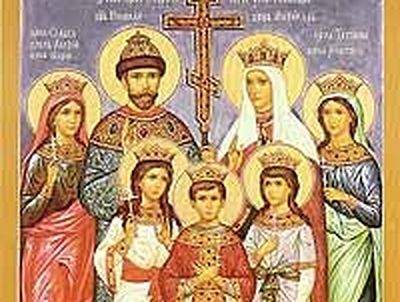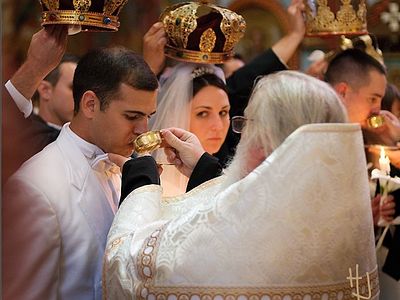For love is strong as death
(Canticles 8:6).
To be together with our loved ones after death
Sts. Peter and Febronia are present in my life all the time. First, this is because as a family man I permanently feel the help of these wonderful patrons of married life; second, the Lord vouchsafed me, a sinner, to become the rector of the Church of Sts. Peter and Febronia of Murom; and third, for me the Life of the Holy Wonderworkers of Murom is an inexhaustible source of reflections and new themes.
I think the most remarkable and symbolic fact in their Life is their repose. The “Story of Peter and Febronia of Murom,” written by Priest Hermolaus Erasmus, is frequently criticized by hair-splitting researchers of all kinds, but, as far as I know, nobody disputes the fact that the holy spouses departed this life on the same day. All the sources, including this Story and the chronicles, unanimously relate that the saints passed away on the same day and even in the same hour.
So, “They lived long and happily and died on the same day.” We have come across and read this popular aphorism many times. However, it happens (though not so often) that this aphorism is not just the happy ending to a fairy tale, a happy love story, or the wishes for a newly married couple at their wedding—but a real fact, a reality.
Let us reflect on this. I believe that every loving married person who enjoys a happy family life thinks, “It would be so good not to part with your other half for a single day after death,” or, “We wish we could depart this life on the same day and hour in order to meet each other there, where there is no pain, no sorrow, no sighing, but life everlasting.” Each person who loves his spouse has often imagined how very difficult it will be to separate from his dearly beloved. Peter and Febronia thought of this as well, and so they prayed that the Lord would take their souls at the same time, simultaneously. Peter even specially waited for Febronia, asked her not to linger and to finish her needlework so that they could repose together.
Of course, our passing from earthly life is always a great mystery. We do not choose when to be born into this world or when to depart it.
Any believer understands that this earthly life is temporal and quite short. We honor as heroes couples who celebrate their golden wedding anniversary, while very few live to celebrate their diamond (seventy-fifth) anniversary and other similar jubilees. Well, they have celebrated the silver, golden wedding anniversaries (raised a son, built a house, planted a tree)… and what next? Our family life on Earth is only a preparation for the everlasting one. In a Christian family we gather for salvation and love.
The task of family as “the little church” is the same as that of the universal Church—to enter into the Kingdom of God the Father together. It is not without reason that the apostle Paul says: Charity never faileth (1 Cor. 13:8). An attribute of true love is that it lasts forever. And if people have lived a long life through affection, joy and grief, if both of them have believed in God and labored for the salvation of their souls, then, undoubtedly, they desire to meet each other in the Heavenly Kingdom, even if they depart this life at different times.
A wedding, a church wedding ceremony is always a happy event—not only for the groom and the bride but also for everyone present. A wedding guest shares the joy of the newlyweds and this makes him feel happy as well. As the Gospel of John reads: He that hath the bride is the bridegroom: but the friend of the bridegroom, which standeth and heareth him, rejoiceth greatly because of the bridegroom’s voice (Jn. 3:29). But the happiest and most moving church wedding I’ve seen, that touched me to tears, was not the wedding of a young couple but that of a very old couple.[1] During that sacrament I came in contact with eternity, with that very eternal love that “faileth not”. I was invited to give Communion to an old man who was dying of cancer. He was in his final days, very weak, unable to walk, and could only lie and sit a little. His wife was also so feeble that she could not leave the flat. I confessed her and gave her Communion as well. During the confession the woman shared her sorrow with me: It grieved her that she had not had time to be married to her husband in church; and then, she thought, it was too late because her husband was dying. “Better late than never,” I thought about it and took the liberty of performing this sacrament over them right in their home.
Though this ceremony is supposed to be conducted in church, I think, the terminally ill man would hardly have been able to get as far as the church. The couple’s joy was boundless. They wept with tender emotion. And I could scarcely hold back tears of joy for them. These people had preserved love and faith in their earthly life, and that wedding was like a blessing for them before entering into eternal life.
I do not know how long that old woman lived after her husband’s death; I never saw her again. But it is certain that she no longer worried about herself or her husband, and waited for the meeting with her beloved one in eternity.
But it often comes to pass (and many of us have witnessed this) that loving spouses die one after the other, like Sts. Peter and Febronia, or die within a relatively short period of time. It happens that an aged spouse dies first and his other half passes away soon after him. As they say: “He called her”, or “She called him.” Sometimes it happens out of deep grief—a person’s heart fails due to his great distress. But I have often observed something different in deeply religious families. Having lost his other half (that is, a part of himself), a person simply stopped clinging as much to this earthly life. He was still living with us on Earth, but at the same time he longed for eternity, to be a citizen of the Heavenly Kingdom. He was preparing for the journey, for his meeting with the Creator and his beloved one. He died not of despair or heart failure but of natural causes.
The Aksenovs and their churches
I was recently invited to the funeral of a wonderful pastor—Archpriest Victor Aksenov [March 23, 1936 – October 1, 2016]. Fr. Victor lived less than a year after the repose of his spouse—his dearly loved matushka [priest’s wife] Vera. Both the priest and his wife were people of amazing kindness, modesty and humility. I think that precisely for their humility the Lord vouchsafed them to live a long and happy life and to be parted not for long. God sent them only one child, and not immediately, but after eight years of life together. But what a nice child he is! Their son Roman, with whom I studied at the Moscow Theological Seminary and Academy, became a priest, a seminary teacher, fathered six children (three boys and three girls) and followed in his father’s footsteps. Fr. Roman completed the renovation of the church that Fr. Victor had begun restoring. It might be worthwhile to give you a more detailed account of this church.
When Roman Aksenov and I were still studying at the Moscow Theological Seminary, all of our fellow students knew where the future Fr. Roman would serve, because his father had undertaken the restoration of a church close to their native village. This Church of St. Nicholas the Wonderworker in the Nikolo-Krutiny village had been closed and ravaged in the Soviet era. At one time the rector of this church was Hieromartyr Martyr Nikolai Golyshev (1882-1938, feast: February 4/17). It was he who baptized the newborn Victor Aksenov. The Nikolo-Krutiny and Berezhki (Fr. Victor’s birthplace) villages virtually form one large settlement on the outskirts of the town of Yegoryevsk in the Moscow region. Both of these populated localities stretch along a road and have almost no distinct boundary. Every time Fr. Victor passed by the closed and desecrated church his heart was wrung with deep sorrow. Could he imagine at that time that one day he would start the restoration of this church, associated with his home?
Fr. Victor served in many parishes, but when he became dean of the Yegoryevsk district, the St. Nicholas Church was returned to the Moscow Patriarchate. Later his son became its rector and continued his father’s ministry. The clergy in pre-revolutionary Russia were like a class: very often the rector of a parish church would be succeeded by his son after his death. Today this phenomenon is very rare. I personally know only one such example. As a matter of fact, I have never met a more patriarchal and traditional family than the large family of Father Victor and Matushka Vera. I knew many families of priests where even several sons followed in their father’s footsteps, but only the Aksenovs have given an example of the family way of life according to class and community. As the saying goes: “This is the Russian spirit, the fragrance of Russia”. Judge for yourself. Nearly all of Fr. Victor’s and his family’s life is connected with the same house and a rural church. This house is a simple country izba [a peasant’s cottage in Russia], painted with green oil paint, with its windows facing the road. Fr. Victor himself and his son Roman were born there. And it was there that Fr. Victor and his spouse peacefully reposed in Christ. Victor Aksenov’s parents were ordinary, pious church people. His father sang in the choir of the church of the Nikolo-Krutiny village. When the church was closed, the family started attending the only active church of the town of Yegoryevsk, dedicated to St. Alexis, Metropolitan of Moscow. And this church became the final place of Archpriest Victor’s ministry. He held the post of rector of St. Alexis Church until his death.
When Roman, Fr. Victor’s son, married, the Aksenov family built a spacious annex attached to their house and began to live all together as one big, closely-knit family. It was a common custom in the old days: When a son got married, the young couple usually began his household simply by making an extension, an annex to the main house.
I am of opinion that the Aksenovs and families like them are restoring our link to Holy Rus’ of old times and help us keep the ancient traditions that enabled our ancestors to create happy, united families from the time of Sts. Peter and Febronia and even earlier. All the troubles of the modern Russian family are a result of the loss of traditions and the rupture of ties with the experience of previous generations. Let us imagine this picture: The son restores the church that his father and grandfather attended long before him. He and his children were born and live in the house where his father had been born. Here it is—the succession of generations! Isn’t it a wonder?
Last time I visited the Aksenovs’ house was on the fortieth day after Fr. Victor’s repose. Before leaving their house I instinctively stopped as if I had forgotten something. It turned out that every time I said good-bye to Fr. Roman I would also come into Fr. Victor’s part of the house to say our farewells to him and Matushka Vera… A lump rose in my throat. I will not be able to do it again, but, if God finds us worthy, we will see each other in the afterlife.
The Passion-bearer Tsar Nicholas II: “The fate of my family is in the Lord’s hands”
In addition to Sts. Peter and Febronia, there is another holy couple to whose family life experience we refer all the time and whom we view as an icon of a happy Christian family. These are Emperor Nicholas Alexandrovich Romanov and his consort, Tsarina Alexandra Feodorovna. These two sainted couples have much in common. Both families were happy in their love. Both were ruling families and much-loved by common people, but hated by the boyar[2] top brass. The latter tried to force both St. Nicholas and St. Peter to abdicate the throne and step down. And both rulers did step down, of their own free will.
Many books have been written about the crown-bearing family—the last ruling members of the Romanov Dynasty; the tsarina’s diaries along with the correspondence of the Royal Martyrs (which is filled with fondness and ardent affection towards each other) have been published as well.
The provisional government[3] set up a commission of inquiry that tried to find facts to prove the tsar and tsarina guilty of high treason. Of course, such facts were not found. One commission member asked why the royal couple’s correspondence had not been published by that time. The answer was: “If we publish their correspondence, the people will start venerating them as saints.”
I have no doubts that Sts. Nicholas and Alexandra read the Life of Sts. Peter and Fevronia and knew it very well. Most likely both the emperor and the empress thought and dreamed many times that “It would be a blessing to depart this life as did these saints—together, without being apart for a single day.” And the Lord granted them this death. Their death was Christian but it could by no means be called peaceful. It was the death of martyrs. But for them the main thing was that they remained with their country to the end, that they shared its fate in suffering, and did not part with each other and their beloved children for a single day or hour.
Did the imperial family have an opportunity to escape and leave the territory of Russia? It is known that a plan to save the last tsar’s family did exist. Monarchists among the White officers were preparing an operation to save the tsar-martyr’s family. But due to poor organization this plan was never to be accomplished. Nicholas and Alexandra had very close relatives among the ruling houses of Europe. The Tsar’s cousin, George V, was King of England. Another cousin, Constantine I, was King of Greece; and one more cousin, Christian X, was King of Denmark.
As is known, at that time no countries considered the new revolutionary state power in Russia legitimate. The Bolshevist republic was seen as a self-declared and illegitimate state. It would have been possible to strike a bargain with the Bolsheviks and demand release of the royal family to emigrate abroad in exchange for recognition of the newly-formed state’s legitimacy by some countries.
Of course, these are just hypotheses, very bold speculations. One could conjecture endlessly: “What would have happened if…” But what we do know for certain is that neither the Emperor nor the Empress wanted to leave their country, and they made no efforts to negotiate an escape. It was as early as 1906, during the Kronstadt Rebellion, that Nicholas II said, “I have an unshakable faith that the fate of Russia, my own fate and the fate of my family are in the Lord’s hands. No matter what happens, I will bow before His will.” When he was already placed under house arrest in Yekaterinburg, he said, “I do not want to leave Russia. I love her too much. I would rather go to the remotest corner of Siberia.” And his holy consort wrote while in confinement, “How I love my country, with all her faults. She grows dearer and dearer to me, and I thank God daily that He allowed us to remain here.” The Royal Martyrs did not imagine themselves without each other and without the country they loved so dearly.
I think the Royal Martyrs had a presentiment that the end was near and they would be gong to a better world before long—a world with no suffering, no wars, no revolutions. If the Romanov family had managed to flee from Russia, what might their destiny have been? Most likely they would have led the life of ordinary Russian emigrants, spending the rest of their days far from their lost motherland, feeling homesick. The Grand Princesses would have married, and Tsesarevich Alexei would probably have married as well. But God saw otherwise. He took them from this earthly life together, as they had walked their life path together. And the gloomy basement of the Ipatiev House became their door to eternal life.
Was their earthly life long? The crown-bearing couple lived together for about twenty-three years and did not reach even their silver wedding anniversary. True, that is not very much—for an average couple it is middle age.
Were they happy? They certainly were! In their life they had love, joys, trials that they overcame together. And the most essential thing is that they walked together towards God all their life and never parted with each other on this way, right up to their deaths.
They lived happily and died on the same day.
